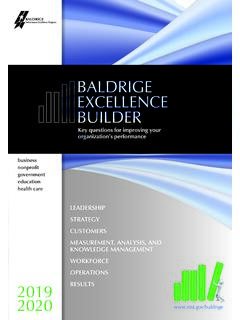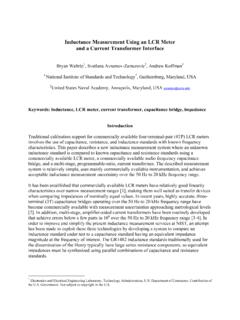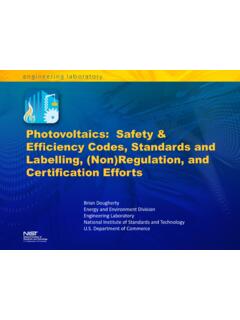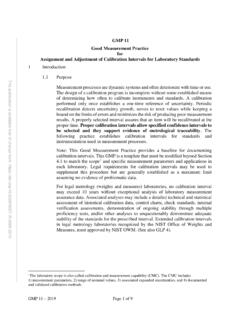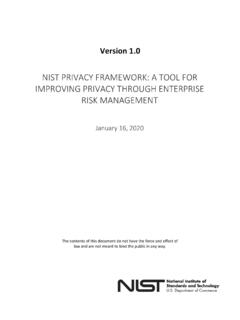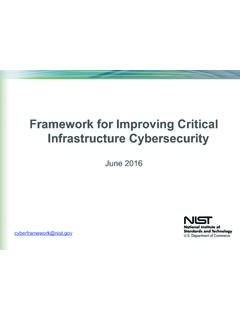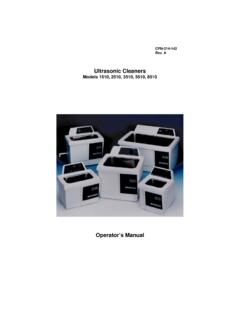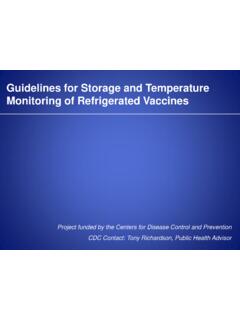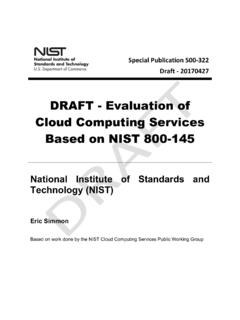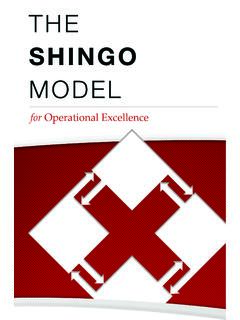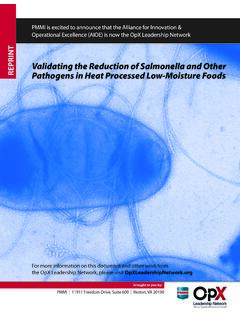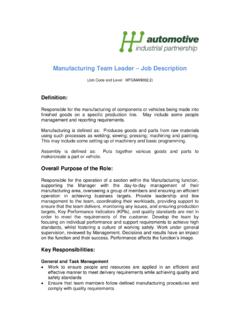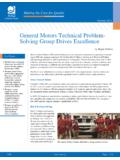Transcription of 2021 2022 Baldrige Performance Excellence Framework ...
1 2021 2022 Baldrige Excellence Framework : Criteria Commentary A-1 2021 2022 Baldrige Performance Excellence Framework Criteria Commentary This commentary provides brief summaries of the Baldrige Criteria for Performance Excellence categories and items. It also includes examples and guidance to supplement the notes that follow each Criteria item in the Baldrige Excellence Framework booklet. For additional free content, and to purchase the booklet, see Organizational Profile Your Organizational Profile provides a Framework for understanding your organization. It also helps you guide and prioritize the information you present in response to the Criteria items in categories 1 7.
2 The Organizational Profile gives you critical insight into the key internal and external factors that shape your operating environment. These factors, such as your organization s vision, culture and values, mission, core competencies, competitive environment, and strategic challenges and advantages, affect the way your organization is run and the decisions you make. As such, the Organizational Profile helps you better understand the context in which you operate; the key requirements for current and future business success; and the needs, opportunities, and constraints placed on your management systems. Organizational Description Purpose This item addresses the key characteristics and relationships that shape your organizational environment.
3 The aim is to set the context for your organization. Commentary Understand your organization. The use of such terms as vision, values, culture, mission, and core competencies varies depending on the organization, and you may not use one or more of these terms. Nevertheless, you should have a clear understanding of the essence of your organization, why it exists, and where your senior leaders want to take it in the future. This clarity enables you to make and implement strategic decisions affecting your organization s future. Understand your core competencies. A clear identification and thorough understanding of your organization s core competencies are central to success now and in the future and to competitive Performance .
4 Executing your core competencies well is frequently a marketplace differentiator. Keeping your core competencies current with your strategic directions can provide a strategic advantage, and protecting intellectual property contained in your core competencies can support your organization s future success. Understand your regulatory environment. The regulatory environment in which you operate places requirements on your organization and affects how you run it. Understanding this environment is key to making effective operational and strategic decisions. Furthermore, it allows you to identify whether you are merely complying with the minimum requirements of applicable laws, regulations, and standards of practice or exceeding them, a hallmark of leading organizations and a potential source of competitive advantage.
5 Identify governance roles and relationships. Role-model organizations whether they are publicly or privately held, or are government or nonprofit organizations have well defined governance systems with clear reporting relationships. It is important to clearly identify which functions are performed by your senior leaders and, as applicable, by your governance board and parent organization. Board independence and accountability are frequently key considerations in the governance structure. Understand your customers requirements. The requirements of your customer groups and market segments might include on-time delivery; low defect levels; safety; security, including cybersecurity; ongoing price reductions; the leveraging of technology; rapid response; after-sales service; multilingual services; and socially responsible behavior and community service.
6 For some nonprofit (including government) organizations, these requirements might also include administrative cost reductions, at-home services, and rapid response to emergencies. 2021 2022 Baldrige Excellence Framework : Criteria Commentary A-2 Understand the role of suppliers. In most organizations, suppliers play critical roles in processes that are important to running the business and to maintaining or achieving a sustainable competitive advantage. Supply network requirements might include on time or just in time delivery, flexibility, variable staffing, research and design capability, process and product innovation, and customized manufacturing or services.
7 Understand your ecosystem. With the increase in multidisciplinary products and services, as well as globalization, many organizations rely ever more heavily on a business ecosystem a network of suppliers, partners, collaborators, and even customers and competitors, with these roles shifting as necessary. Taking advantage of these ecosystems enables distributed risk management and may result in new business models, new customers, new talent pools, and much greater efficiency in meeting customer expectations. In some cases, the organization s growth may depend on the collective growth of the ecosystem and its ability to prepare for the future. And as competition comes from organizations in different industries, organizations may be able to stand out from their competitors through new and novel offerings, possibly through the ecosystem.
8 Ecosystem steps for organizations to consider include reconnecting with partners, maximizing learning through shared information, rethinking customer offerings in a larger context, using concepts from ecosystem organizations as idea generators, and building nontraditional partnerships. Organizational Situation Purpose This item asks about the competitive environment in which your organization operates, including your key strategic challenges and advantages. It also asks how you approach Performance improvement and learning. The aim is to help you understand your key organizational challenges and your system for establishing and preserving your competitive advantage.
9 Commentary Know your competitors. Understanding who your competitors are, how many you have, and their key characteristics is essential for determining your competitive advantage in your industry and marketplace. Leading organizations have an in depth understanding of their current competitive environment, including key changes taking place. Sources of comparative and competitive data might include industry publications, benchmarking activities, annual reports for publicly traded companies and public organizations, conferences, local networks, and industry associations. Strategic challenges and advantages. Operating in today s highly competitive marketplace means facing strategic challenges that can affect your ability to sustain Performance and maintain your competitive position.
10 Understanding your strategic advantages is as important as understanding your strategic challenges. They are the sources of competitive advantage to capitalize on and grow while you continue to address key challenges. Strategic challenges and advantages might relate to technology, products, finances, operations, organizational structure and culture, your parent organization s capabilities, customers and markets, brand recognition and reputation, your industry, globalization, your value network, and people. Know your strategic challenges. These challenges might include the following: Your operational costs ( , materials, labor, or geographic location) Rapid technological changes The availability of skilled labor The retirement of an aging workforce Economic conditions, including fluctuating demand and local and global economic downturns Expanding or decreasing markets Mergers or acquisitions by your organization and your competitors The cyclical nature of your industry The introduction of new or substitute products Data and information security, including cybersecurity New competitors entering the market Know your strategic advantages.
